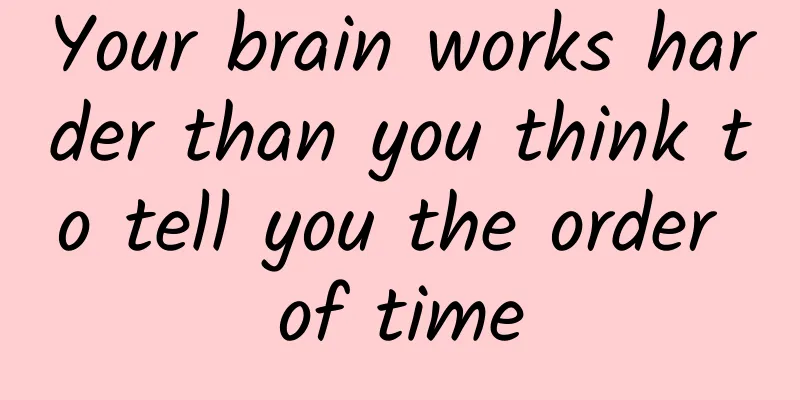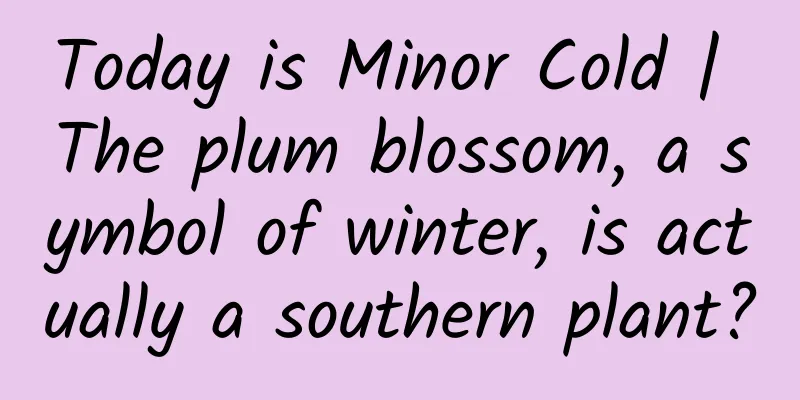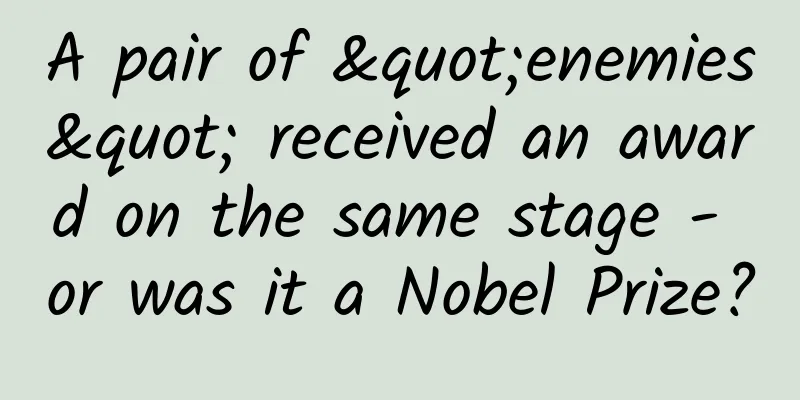Your brain works harder than you think to tell you the order of time

|
In our perception, time is an invisible and intangible attribute. But there is another attribute that is similar to time, but more concrete to us - that is space. So we can first look at how the brain encodes space. We can now do an experiment, close your eyes, and then try to reconstruct your surroundings in your mind. We can call this ability a "cognitive map" in your brain. In the 1970s, John O'Keefe discovered that this cognitive map is likely hidden in our hippocampus. Here we need to briefly introduce the hippocampus. The hippocampus is hidden under the cerebral cortex. It is divided into 4 distinct areas, namely the dentate gyrus, CA1, CA2 and CA3. (Highlights) O'Keefe discovered that many neurons would fire steadily when the rat was in a specific position or facing a specific direction, but would not fire at other times. He thought that such a group of neurons should be able to encode all the locations in a single environment, which is one of the important conditions for the generation of cognitive maps. In 1976, O'Keefe officially named these neurons "place cells." But how do we string together these different locations? The Mosers discovered grid cells in the entorhinal cortex next to the hippocampus. They were named grid cells because when these cells are working, they form a very magical hexagonal pattern, which is very neat and grid-like. They found that this grid cell is more about building a coordinate system for our brain to reflect the distance between two objects. Sometimes when you get up at night, the room is very dark and you can't see anything, but you can roughly know how far it is to walk from the bed to the door. In this process, grid cells play a certain role. In 2014, they also won the Nobel Prize in Physiology or Medicine for this discovery. Time Cells Early on, scientists believed that the hippocampus system primarily served spatial navigation and that the brain might have other specific areas for perceiving time. However, some studies have shown that if the human hippocampus is damaged, some time-related functions will be impaired. For example, after learning a series of words, we may not be able to recall the order of these words. Scientists have also found that when we recall the order of different events in our minds, the hippocampus will be activated. In this way, it seems likely that the hippocampus also plays a key role in human perception of time. In 2007, the first experimental evidence that hippocampal neurons can encode time appeared: scientists asked rats to remember to smell five different odors in sequence, and then tested whether the rats could remember the order in which these odors appeared. In other words, which odor appeared first and which odor appeared later. Scientists found that when the rats remembered the order of the odors, hippocampal neurons showed a specific activity pattern. Other researchers have explored the role of the hippocampus in encoding time from other angles. As we mentioned earlier, place cells are related to our specific location and are activated in a specific geographical space. So, the question they raised is, if our location does not change, how does the brain record everything we experience? These scientists designed an "8"-shaped maze in which rats can alternately circle clockwise and counterclockwise. At the same time, they placed a rolling wheel in the middle of the maze, and the rats were required to run on the rolling wheel for a fixed period of time between switching between the two directions of circling. In this experimental design, the running of the rats in the maze represents an event related to spatial location, while the running on the rolling wheel has nothing to do with spatial location, but is only related to time. The results were very interesting. Scientists found that as long as the rats kept running in the wheel, some hippocampal neurons would discharge one after another at specific moments. For example, some might discharge at the first second, and some at the third second, just like a ticking timer. Moreover, the later the cells started to discharge, the longer the active discharge time was. (Similar to 1-2-3---4--) More importantly, the neurons that discharged were different when the rats went around counterclockwise or clockwise before entering the wheel to start running. But each time the rats ran in the wheel after circling counterclockwise, the neurons that discharged were the same, and the same was true for circling clockwise. In other words, the discharge of these neurons was not only related to the passage of time, but also to the content of the experiment. In this way, scientists discovered this working mode of neurons that discharge one after another and fill the entire time period. They called cells with this working mode "time cells." Later, scientists also discovered similar cells in the brains of different species, including humans. //Ramp cell and time coding mode We found a correspondence between time cells and place cells in the hippocampus, so are there cells in the entorhinal cortex that correspond to grid cells? Scientists began to pay attention to what the lateral entorhinal cortex, a nearby brain region, was doing. Albert Tsao, now a postdoctoral researcher at Stanford, conducted this study in 2007. His thinking is actually related to psychology: In our psychological cognition, if we recall, we will feel that these times are also represented by a series of events. This scientist wants to explore how our brain perceives this time sequence, or the order in which events occur. He, the Mosers, and their colleagues conducted further experiments, for example, placing rats in boxes of different colors in sequence: when the rat entered the box, the firing rate of these neurons increased rapidly. Over time, the activity of the neurons decreased at different rates, some on the scale of seconds, and some on the scale of minutes. On the next trial, when the rat re-entered the box, the neuronal activity began to increase again. What's more, the activity of some of these cells not only decreased within each trial, but also showed a downward trend during the entire experiment; while the activity of another group of cells showed an increasing trend. This showed a trend: hundreds of neurons seemed to be working together, each neuron had a different activity pattern related to time, and based on the combination of activity patterns, the researchers could - and they speculated that the rats could - separate different trials (like timestamps, tracing the signal back to a certain period of time in the box) and arrange them in order. These neurons were named "ramp cells" This result coincides with the research of cognitive neuroscientists Marc Howard and Karthik Shankar of Boston University. Their research mainly uses mathematical models to characterize how such time is encoded and decoded (neural network models of perceived time), and then finds that their models are very consistent with such an observed neural structure. When we encode these times, it's like ripples in a pond. When a stone is thrown in (representing an event), there will be circles of ripples spreading outward. When we take a snapshot of the ripples at a certain moment, the position of the ripples in this snapshot actually encodes time. In the model, such ripples are the activity of neurons, and the changes in ripples represent the rate of neuronal activity. When something happens, the activity rate of this group of neurons will decay exponentially, but they will decay at different speeds. This is a bit abstract. We can imagine each neuron as a slope with different slopes, but there is a small ball on the top of each slope. When an event occurs, the small balls will be released from the top of the slope at the same time. So we can imagine that if we take a snapshot of these small balls at a certain point in time later, we can calculate the time at this time based on the position of these small balls. In Howard's model, there are two groups of neurons working together to complete this process. The first group is responsible for releasing the small balls, and the second group is responsible for calculating the time based on the position of the small balls. Howard's research group used a mathematical transformation to reproduce this process. If Howard's model is true, then we can understand how the brain creates and maintains the timeline of past memories. Howard likens this timeline to the "tail of a comet": it continues to extend backwards as our lives continue, becoming more and more blurred and simple. Because the decay of neurons is exponential, the characteristic of exponentials is that its changes remain consistent at different scales. The same situation is also reflected in our memory, so we feel that the memory of 10 minutes ago is clearer than that of 20 minutes ago, and the memory of 10 days ago is also clearer than that of 20 days ago. "Time cells" and "ramp cells" are just two ways that scientists have discovered that the brain uses to establish connections with time. In fact, scientists have also discovered many other discharge patterns of neurons. But in general, these models all point in the same general direction, that is: the brain records time in a distributed way. This is different from what people previously believed, that there is a "clock" in the brain that is specifically used to record time. Not only is the same time information encoded by multiple cells, but the time scales encoded in different brain regions are also different, some are at the millisecond level, and some are seconds, minutes, or even longer. Time information can also change during the transmission process between brain regions and be decoded step by step. In addition, the brain's encoding of time and space are not two completely independent aspects, but are inextricably linked. First, the brain encodes time and space in very similar ways. We extract time information from time cells in much the same way we extract space information from place cells. When we try to remember something that happened, the neurons that recorded the time signal will fire again in the same firing pattern. More importantly, the so-called "time cells" in the brain are not a specific type of cell. Scientists have found that although there are indeed some neurons whose discharge patterns are only related to space or time, more neurons actually have the ability to respond to both spatial and temporal signals. For example, many studies have shown that when rats begin to rest after passing through a maze, the position cells that originally continuously recorded position information during the maze will "play back" the neural activity at that time. In other words, the spatial signals encoded by the brain when the rat moves will be reproduced as time codes when it is stationary. For example, the so-called "time cells" activated when the rat runs on a roller wheel will actually discharge when the rat runs to a specific position in the maze. All of this shows that position cells also have the function of time cells. In short, the brain is really mysterious. When the mysterious brain meets the mysterious time, it becomes even more fascinating. How exactly does the brain encode time? There are still many unsolved problems. For example, how do we read the exact time from the relative "timestamps" recorded by the brain, why can neurons change the discharge pattern as time changes, etc. As ordinary people, all we can do is marvel at the magic of nature and wait for scientists to clear the fog for us. This article is a work supported by Science Popularization China Starry Sky Project Team/Author Name: Global Science Review: Tao Ning Produced by: China Association for Science and Technology Department of Science Popularization Producer: China Science and Technology Press Co., Ltd., Beijing Zhongke Xinghe Culture Media Co., Ltd. |
<<: Do you take antibiotics when you have inflammation? Is it really a panacea?
Recommend
Common user incentive methods for event operations!
In the definition of a service platform, as the p...
NetEase Cloud Music Product Analysis
1. Introduction After analyzing the iterations of...
Monument Valley design concept is learning is earning
We call those legendary, promising and unique com...
Is Windows 9 really going to be free?
Recently, there have been a lot of reports about ...
Zhang Jinyang - Interpersonal Relationships in the Workplace: 18 Lessons in Dealing with the World
The course is taught by teacher Zhang Jinyang, tit...
Solid info! 6 customer acquisition models for APP promotion!
This time, I spent 2 days researching various pop...
Korean cars are in decline, THAAD can't take the blame
South Korea's insistence on deploying the THA...
What is the exposure mechanism of information flow advertising?
When doing information flow advertising, you may ...
If you don’t want to be “backstabbed” by your air conditioner, in addition to looking at the capacity before buying an air conditioner, you should also pay attention to this parameter!
As the summer heat arrives, all regions are enter...
Li Xiang no longer insists, Ideal Auto plans to launch pure electric models in 2022
As one of the three major new car-making forces i...
The termination of IPO guidance is just a warning. Dong Mingzhu's bet on Yinlong was destined to be an endless gamble.
On May 30, the Guangdong Securities Regulatory Bu...
Advertising landing page production process
One of the things that netizens hate most when su...
Should you keep your electric water heater on all the time? Or should you only turn it on when you need it? Read on to find out →
Should you keep your electric water heater on all...









